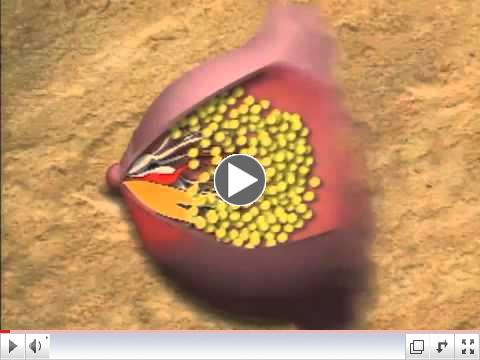|
Mastitis-definitions.
| |
It appears that Mastitis can be defined as an inflammation of the breast that can be caused by obstruction of a breast duct (stasis), infection and/or allergy. (Pain due to trauma or nipple irritation may be similarly classified). Usually occurring in the first two-three weeks post-partum, it is less frequent in breast feeding women.
The Academy of Breastfeeding Medicine (ABM) defines it as a "tender, hot, swollen, wedge-shaped area of the breast associated with a temperature of 38.5F degrees or greater" (one third of women may not have fever). Breast milk with "milk stasis" Mastitis has few bacteria and white blood cells; both <103 each per mL milk; "infectious Mastitis" has >103 bacteria and white blood cells per mL milk; "non-infectious mastitis" has >106 leucocytes but 103 bacteria per mL milk. Journal of Human Lactation |
|
Urinary tract infection (UTI) & renal scarring.
| |
From 2 retrospective audits done (in the UK) approximately 10 years apart of children aged <8 years, diagnosed with UTI, it appears that today most children are treated within three days of symptom onset and are much less likely to develop renal scarring.
Archives of Disease in Childhood |
|
|
Download, print and pin this information on your office wall.
-This is a "Must Have" (Ed.)
|
|
Updates in Pediatrics is brought to you by:
| |
|
Pearl of wisdom: "We don't stop playing because we grow old. We grow old because we stop playing."
| |
|
Underwriting Opportunities
|
With a circulation of over 5,000, Updates in Pediatrics offers an excellent opportunity to promote your brand at affordable rates.
|
|
Parental presence during cardiopulmonary resuscitation (CPR) in children.
There is an ongoing debate in the USA, the UK and Europe regarding whether parents should be permitted to be present during CPR. Depending on the local medical culture, pediatricians and nursing staff may or may not have similar views. Clinician support varies by discipline, geographic area and hospital department.
In France, it appears that most French Emergency Physicians and their nursing staff are reluctant to have parents present. In the USA most nursing staff appear comfortable with parents being given the opportunity if desired, while many USA physicians (22% to 93%) appear less likely to want to have parents present during CPR.
Every institution managing infants that may require CPR needs to have a discussion with all medical and nursing personnel involved regarding parental presence during CPR. A formal hospital policy should be maintained and updated. Paternalism should not be a factor in decision making, and the parental option seems appropriate (Ed).
Archives of Disease in Childhood
|
Video Feature
 | | Mastitis and blocked milk ducts |
via YouTube
|
Nebulized beclomethasone to prevent viral wheezing.
In a randomized, double-blind, placebo-control trial 521 children (aged 1-5 years) with a history of wheezing associated with an upper reparatory tract viral infection, were allocated to receive, either twice daily nebulized beclomethasone or a placebo for 10 days. Wheezing was assessed with treatment onset and at completion.
Nebulized inhaled beclomethasone appears NOT to prevent wheezing associated with a viral respiratory tract infection.
|
|
Increased association between febrile seizures (FS) & allergic rhinitis (AR).
Both FS an AR are common childhood disorders and it appears that both tend to have specific viral infections and cytokine profiles.
A large study of 1,304 children with febrile seizures followed for (mean) 6.7 years indicates that allergic rhinitis appears to be increased (by 20%) in those children with febrile seizures and more substantially increased for those having >3 FS.
Pediatric Neurology
|
Growth patterns of Large for Gestational Age (LGA) preterm infants to age 4yrs.
LGA is often defined as a weight, length, or head circumference that is above the 90th percentile (some argue >97th percentile) for a particular gestational age (this includes preterm infants).
A cohort study of 1,302 preterm, and 489 full term babies measured repetitively during their first four years of life indicates that growth patterns for preterm LGA babies are distinctively different from those of full term LGA infants; by 4 years of age however, BMI's are similar. Preterm LGA babies' increase in BMI (for gestational age) over time; adds to their metabolic risks. Pediatrics
|
|
|